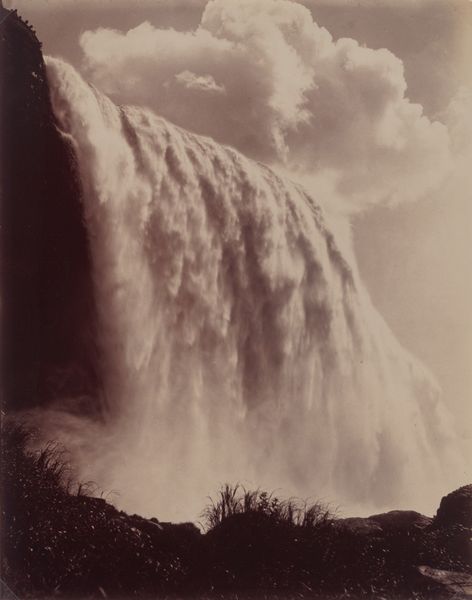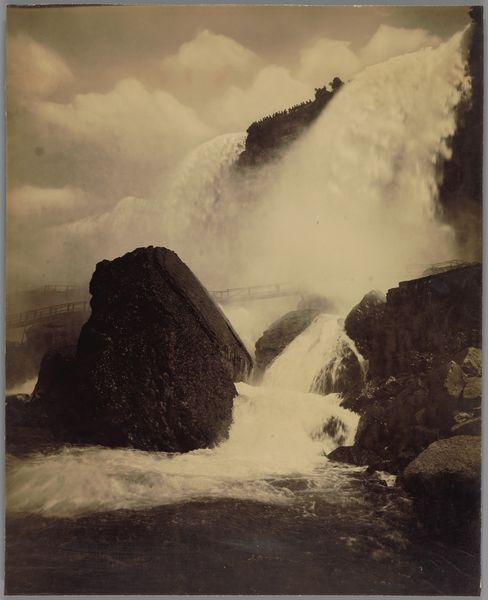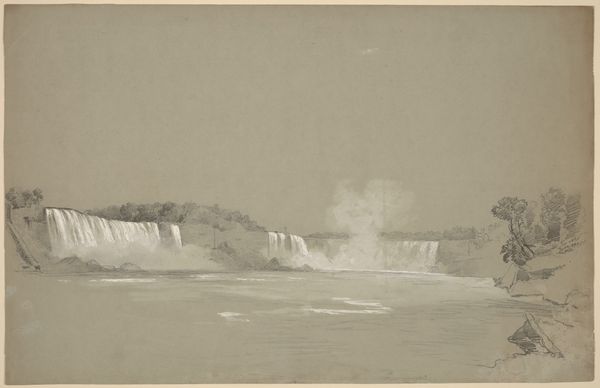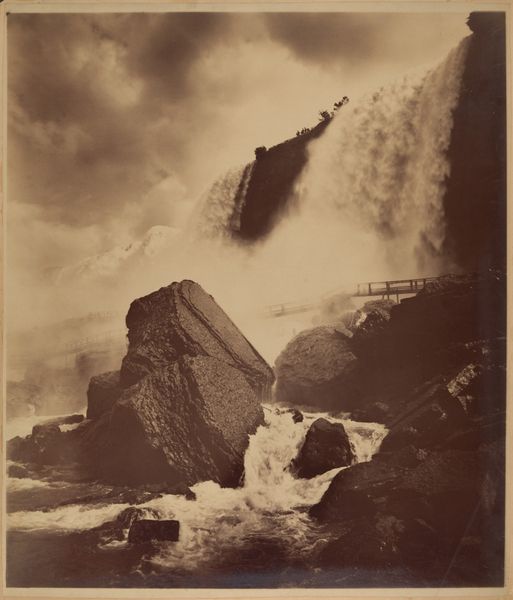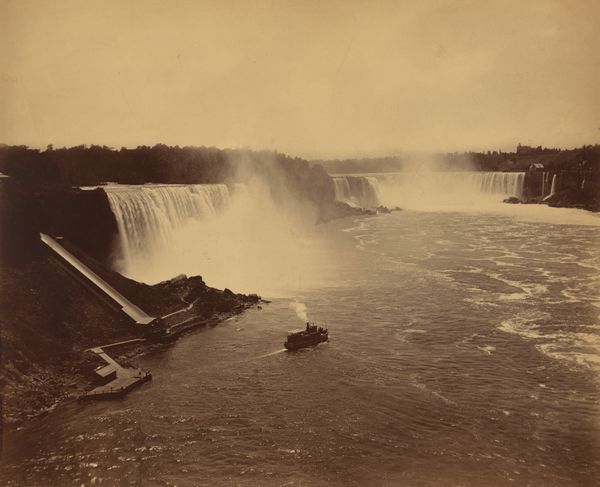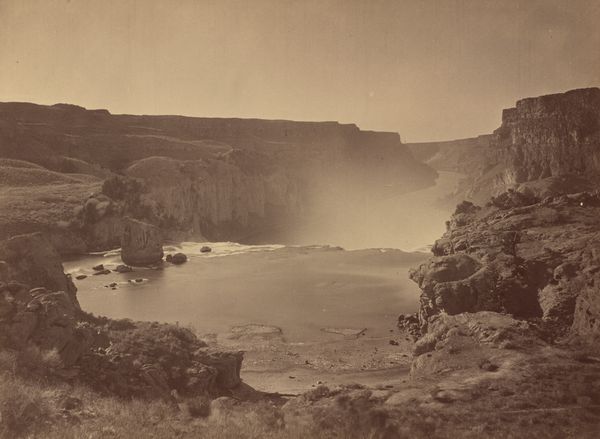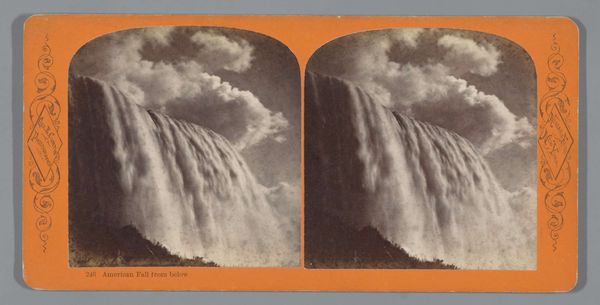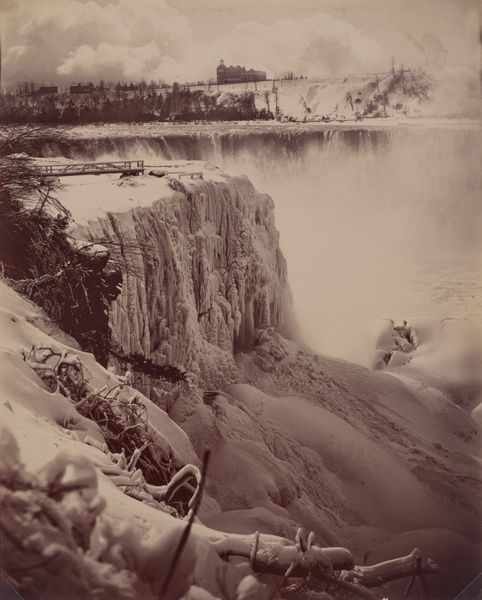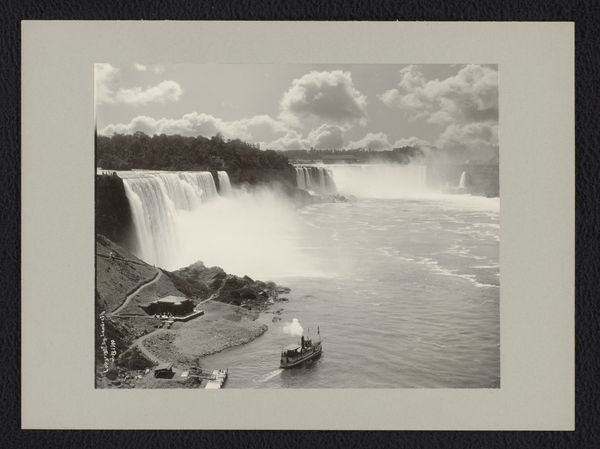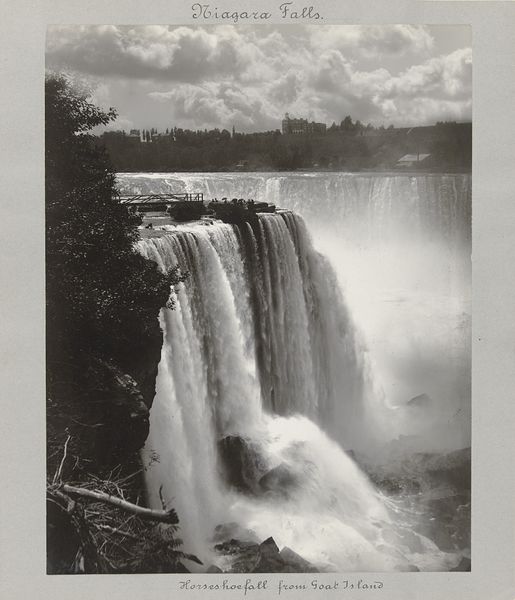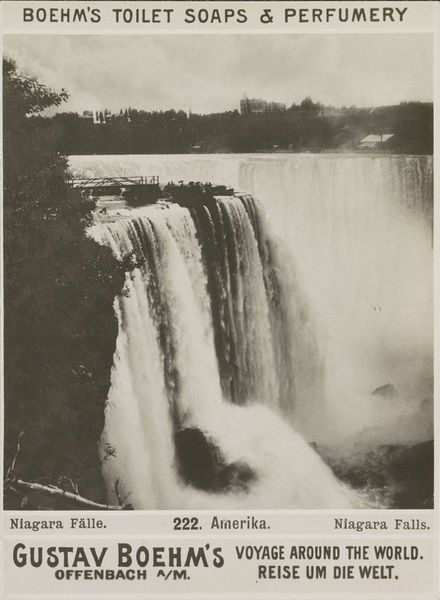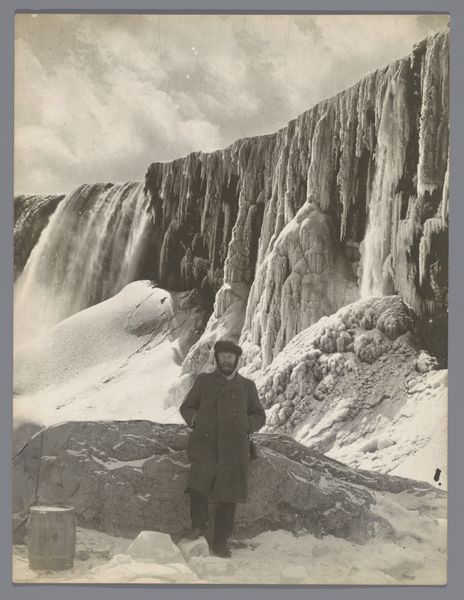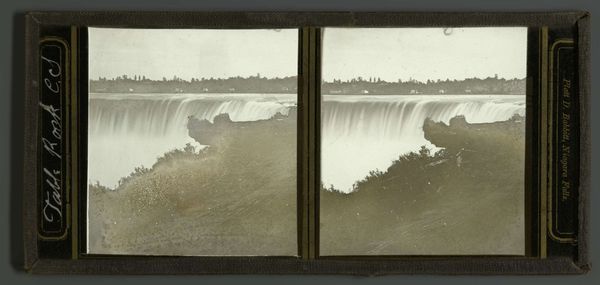
#
cloudy
#
natural shape and form
#
snowscape
# print
#
low atmospheric-weather contrast
#
sky photography
#
monochrome photography
#
gloomy
#
fog
#
skyscape
#
shadow overcast
Dimensions: image: 12.5 x 16.9 cm (4 15/16 x 6 5/8 in.) sheet: 14.2 x 18.5 cm (5 9/16 x 7 5/16 in.) mount: 27.8 x 37.8 cm (10 15/16 x 14 7/8 in.)
Copyright: National Gallery of Art: CC0 1.0
Editor: This is William D. Murphy’s “Niagara Falls,” a print from 1899. It's such a melancholic scene, all monochrome and mist. It’s kind of breathtaking and gloomy at the same time. What do you see in this piece, Professor? Curator: Beyond the romantic vision of nature, consider this image as a constructed view shaped by its time. Photography, especially its dissemination through prints, was becoming increasingly popular. How does the availability and presentation of images like this influence the public’s understanding of "nature," particularly iconic sites like Niagara Falls? Editor: That’s a good question. So, you’re saying that photographs like this were kind of shaping how people *thought* about Niagara Falls? Curator: Exactly! Before widespread photography, experience was firsthand or mediated by paintings, often romanticized. Now, through printed photographs, Niagara was being democratized as an experience of viewing - but also controlled. Who had access to create and distribute these images, and what were their motivations? Were they purely aesthetic, or was there a commercial or nationalistic agenda? Editor: So it wasn’t just about capturing the beauty, but also about *owning* the image of it, in a way? Like a power grab through imagery? Curator: Precisely. Think about the socio-economic context: the rise of tourism, industrial development impacting the natural landscape... How does Murphy's image engage with these broader historical currents? Is it a celebration, a critique, or something else entirely? What is this photograph really telling us about America at the turn of the century? Editor: I guess I was seeing a picture of a waterfall, but it's more complex than that. Thanks, that gives me a lot to think about! Curator: Indeed, understanding art requires peeling back the layers of history and social influence. Every image speaks volumes about its time.
Comments
No comments
Be the first to comment and join the conversation on the ultimate creative platform.
